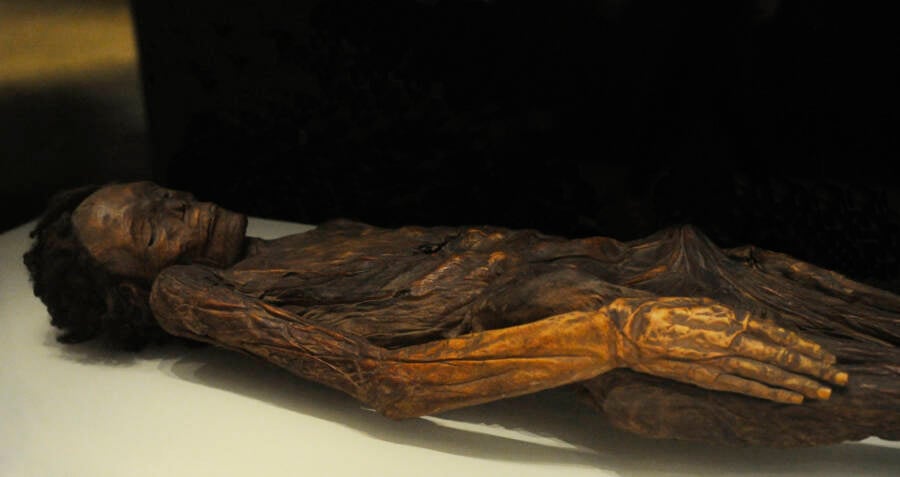The Guanche Mummies: The Mysterious Corpses Found On The Canary Islands

Universal History Archive/Universal Images Group via Getty ImagesMummified remains of a Guanche male at the National Archaeological Museum in Madrid, Spain.
The history of the Canary Islands — an archipelago that’s part of Spain but located much closer to the coast of Morocco — is still mysterious to researchers. It was once inhabited by the Guanches, a pre-colonial Indigenous people. But much of their way of life has been lost to time.
However, several Guanche mummies found in the caves on the Canary Islands are helping researchers uncover more of the islands’ history. These mummies are also helping experts separate fact from fiction.
According to National Geographic, researchers are hoping to learn more about the fabled Barranco de Herques, a “ravine of the dead” that allegedly houses the “cave of the thousand mummies.”
The story goes that, in 1764, Spanish regent Luis Román entered a cave within a gorge on Tenerife, the largest of the Canary Islands. There, he discovered, as the writer José Viera y Clavijo described, “a wonderful pantheon… So full of mummies that no less than a thousand were counted.”

De Agostini Picture Library via Getty ImagesA cave filled with the Guanche mummies in the Canary Islands. Lithograph by Giuseppe Antonelli in 1838.
Most archaeologists agree that the description of “a thousand mummies” was an exaggeration, but it’s likely that there were hundreds of mummies hidden within this mysterious cave (with no recorded coordinates).
Local lore also maintains that a large sepulchral cave exists on the islands, housing the remains of the Mencey kings, the islands’ pre-colonial rulers.
While no distinct Guanche populations exist today, the few mummified corpses that archaeologists have managed to extract from the caves of the Canary Islands are helping to illuminate the history of the people — especially in regard to how they honored their dead.
The Guanche mummies — called xaxo — were treated with dry herbs and lard before being left to dry in the sun. Once dried, the body was smoked by a fire. In total, the process took a little over two weeks, and then the family of the deceased would place the body in a stitched animal hide bag.
Remarkably, Guanche mummies were very well-preserved, especially compared to their Egyptian counterparts. Many of their organs remained intact, preserved within their bodies thanks to a mixture of minerals, herbs, bark, and resin from dragon trees that prevented decay.
Javier Carrascoso, associate chief of radiology at Madrid’s QuirónSalud University Hospital, told National Geographic that one Guanche mummy had been so well-preserved that “it looked like a wooden sculpture of Christ.”
Unfortunately, the cave of a thousand mummies still remains elusive to archaeologists in the region. Some believe it may have been lost to a cave-in or, more likely, plundered when the islands were colonized.





